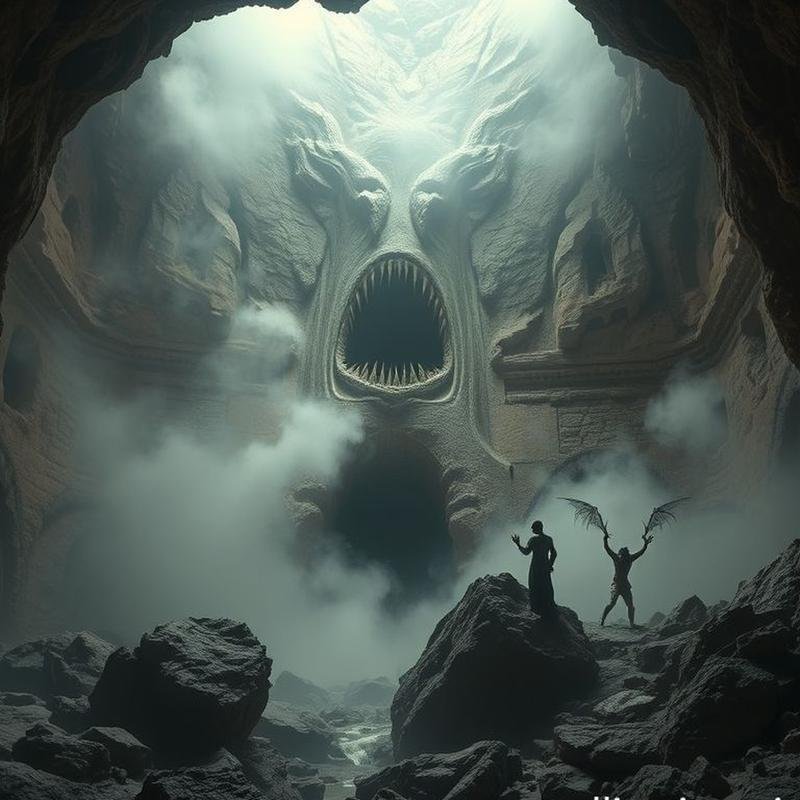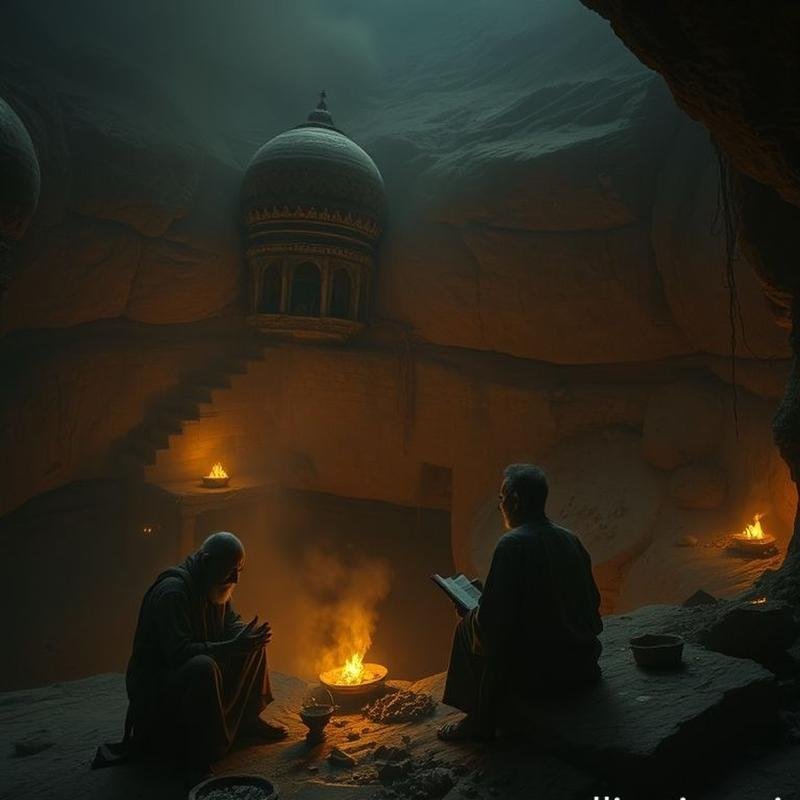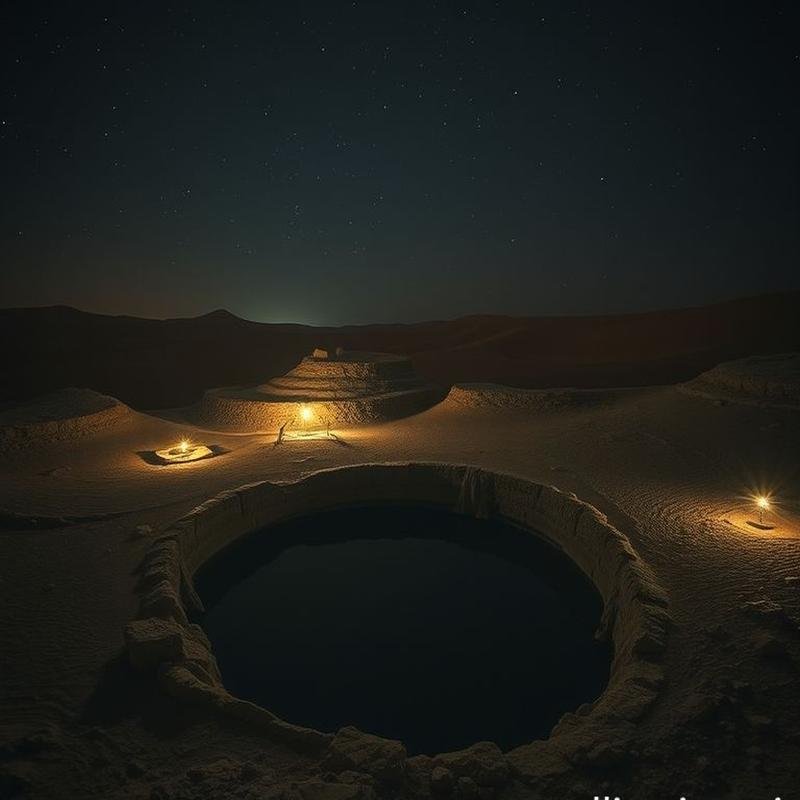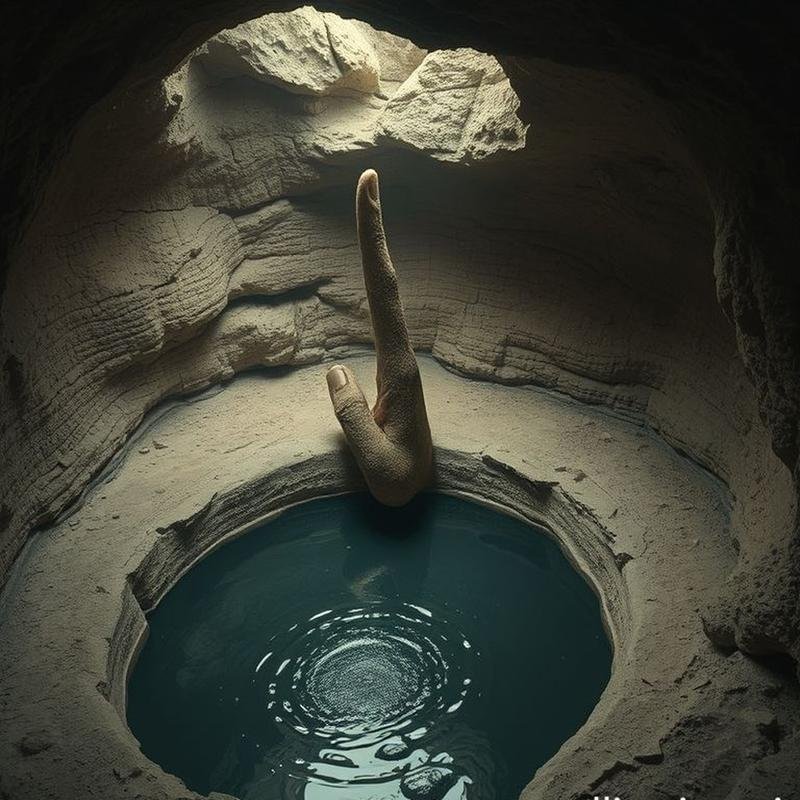Barhout Well: Jinn Prison or Gateway to the Afterlife?

Barhout Well: Unmasking Yemen’s Mythical ‘Well of Hell’
Could the essence of fear be rooted in a natural phenomenon? The Well of Barhout, a profound chasm in Yemen, has long been shrouded in legend, with tales of jinn and eternal imprisonment. However, these enduring narratives may conceal remarkable geological realities and a complex interplay between humanity and the natural world. Is it a concealed portal to another dimension, or a window into the evolution of our beliefs?
We will investigate the depths of Barhout, not to seek mythical entities, but to understand the origins of deeply ingrained fear. We will examine how a natural phenomenon has evolved into a compelling and terrifying myth, and how geological processes and historical narratives have shaped this rich and controversial cultural legacy. Will we uncover the underlying truth, or will the legends continue to define this enigmatic location? Before we proceed on this exploration, we invite you to share your perspectives and expectations regarding this ancient enigma in the comments section. We also encourage you to subscribe to the channel for the latest updates.
The Whispers of Jinn: Myth and Legend
But before we delve further, are the reported sounds merely echoes produced by unique cave formations? Or does something else, something more sinister, reside in this forgotten place? For centuries, Yemeni generations have passed down chilling accounts of the Well of Barhout, believing it to be a prison for malevolent jinn. Accounts describe sounds emanating from the well at night, purportedly the screams of jinn undergoing torment. Some claim that the well’s water is cursed, and that contact with it brings misfortune or illness. In some versions, the well is described as a gateway to the realm of jinn, allowing supernatural beings to pass through. Some connect these stories to narratives from the Holy Quran, further enhancing the aura of mystery and fear surrounding the site. There is also a widespread belief that angels guard the well to prevent the jinn from escaping and harming humans. Some tribes avoid approaching it for fear of incurring the jinn’s wrath or falling under their influence. Are these merely myths and fleeting stories, or is there a basis for these beliefs? Could natural phenomena have been misinterpreted as supernatural events?
Echoes of the Past: Historical Accounts
Before we delve deeper into the well’s secrets, let’s pause to consider the echoes of the past. Did ancient civilizations know of this deep cavity in the earth? And did they leave behind any clues about its mysteries? In his book Taj al-Arus, al-Zubaidi describes the Well of Barhout as an opening leading to a deep valley in hell – a truly unsettling depiction! Even Ali ibn Abi Talib, may God be pleased with him, is said to have described its water as the worst on earth, and a refuge for the souls of non-believers. However, the accounts are not limited to religious and historical texts. Ancient Yemeni folklore portrays the well as a dwelling for jinn and demons, and a gathering place for malevolent spirits. Some tales even suggest that its waters are used in magic and sorcery, and that accessing it requires specific rituals. Even Western travelers, such as Theodore Bent, noted the existence of a mysterious well in Hadhramaut that inspired numerous myths and superstitions. Were these merely delusions, or do they reflect something deeper, something more ominous?
Geological Reality: The Earth’s Secrets Revealed
Is everything surrounding the Well of Barhout simply legend and myth? Let’s examine it from a geological perspective, where the earth’s secrets are revealed. The well is located in Al Mahrah Governorate, eastern Yemen, within a region characterized by unique karst topography, formed from soluble limestone rocks. Over millennia, these rocks have been eroded by acidic water and collapsed, resulting in the formation of karst caves. The Well of Barhout is, in fact, the result of a collapsed karst cave, a purely natural phenomenon. It is approximately 112 meters deep, and the diameter of its opening ranges from 20 to 30 meters, making it one of the largest karst sinkholes in Yemen. Geological studies have revealed that the area surrounding the well contains sedimentary layers dating back to the Jurassic and Cretaceous periods, providing insights into the earth’s ancient history. Unique mineral formations have been discovered within the well, such as calcite and aragonite deposits, formed by chemical interactions between water and rocks. Despite the mystery surrounding the well, there is no scientific evidence to suggest significant volcanic or seismic activity in the area that directly explains its formation. However, the temperature and humidity inside the well differ from external conditions, creating a unique microclimate environment that sparks scientific curiosity.
Cultural Tapestry: Weaving the Threads of Belief
Before we begin reviewing the scientific evidence, we must acknowledge the remarkable cultural tapestry that the Well of Barhout has woven into Yemeni collective memory. It is rumored that the well is mentioned in the Prophetic Hadith, as a well in Hadhramaut containing the souls of non-believers, lending it an aura of profound religious significance. Local legends depict the well as a haven for jinn, and that strange sounds emanate from its depths in the dead of night, sounds that evoke primal fear in listeners. Yemenis associate the well with prophecies of the end times and its terrifying events, as if it were a locked gate that will one day be opened to unleash dire consequences. Amidst the transmitted folk narratives, there is a widespread belief that the well’s water is used in magic and sorcery rituals, adding to its mystery and enveloping it in an atmosphere of ingrained fear. Historically, locals avoided approaching the well for fear of the malevolent spirits lurking within, leaving it isolated and silent. Nevertheless, the attempt by a daring Yemeni exploration team to enter the well in 2021 generated significant media attention, revealing a deep fascination with exploring the unknown.
Echoes Across Cultures: Shared Fears and Myths
Is the Well of Barhout truly unique? Or does this ancient echo of fear resonate across different cultures? In Greek mythology, the Cave of Tainaron served as a gateway to the underworld, where Hercules descended on his heroic quest. Similarly, the Romans considered Lake Avernus near Naples a terrifying entrance to the underworld, as described by Virgil in the Aeneid, where poisonous fumes obscured sunlight and prevented birds from flying above it. In Irish mythology, the Cave of Cruachan in County Roscommon represents a portal to another world, a world through which supernatural creatures enter our earthly realm. In China, the sacred Mount Tai is associated with the afterlife, where spirits are believed to ascend on their eternal journey. In Hinduism, caves and sacred sites are considered meeting points between the human world and the world of gods and spirits, embodying the deep-seated belief that the boundaries between worlds are permeable. Even in the myths of the indigenous peoples of North America, caves and springs symbolize gateways to other realms, often associated with religious rituals and ceremonies, as an integral part of a deeper spiritual journey. In Norse mythology, Mount Helga in Iceland was considered a place where one could see the other world, provided they ascended to it with a pure heart. These sites, across diverse cultures, share a central theme: that there are places on earth that transcend the boundaries of our physical world, and represent points of contact with other unknown and mysterious realms.
Conclusion: Between Legend and Science
Where, then, does the truth lie? It fluctuates between the echoes of legends and the whispers of science. The Well of Barhout, with its 112-meter depth, has been the subject of a daring expedition towards the earth’s core, a journey that led an Omani team to discover waterfalls and remnants of life. But do these depths truly conceal prisons for jinn, as rumored? There is no conclusive scientific evidence to support these circulating stories. The foul odors emanating from the well may simply be the result of waste or corpses being dumped there in the past, a less exciting explanation, but more realistic and logical. Thus, the Well of Barhout remains a buried enigma, a silent witness to the power of legends and the ability of nature to inspire both fear and wonder.
Ultimately, the Well of Barhout stands as a testament to the human capacity to transform natural phenomena into stories and legends that transcend the boundaries of reality. It is a reminder that fear and curiosity are intertwined, and that our quest to understand the unknown is what drives us to explore the depths of the earth and the depths of ourselves.
Following our exploration of the depths of the Well of Barhout, what other secrets do you believe are hidden within the earth and awaiting discovery? Share your thoughts and expectations in the comments!







